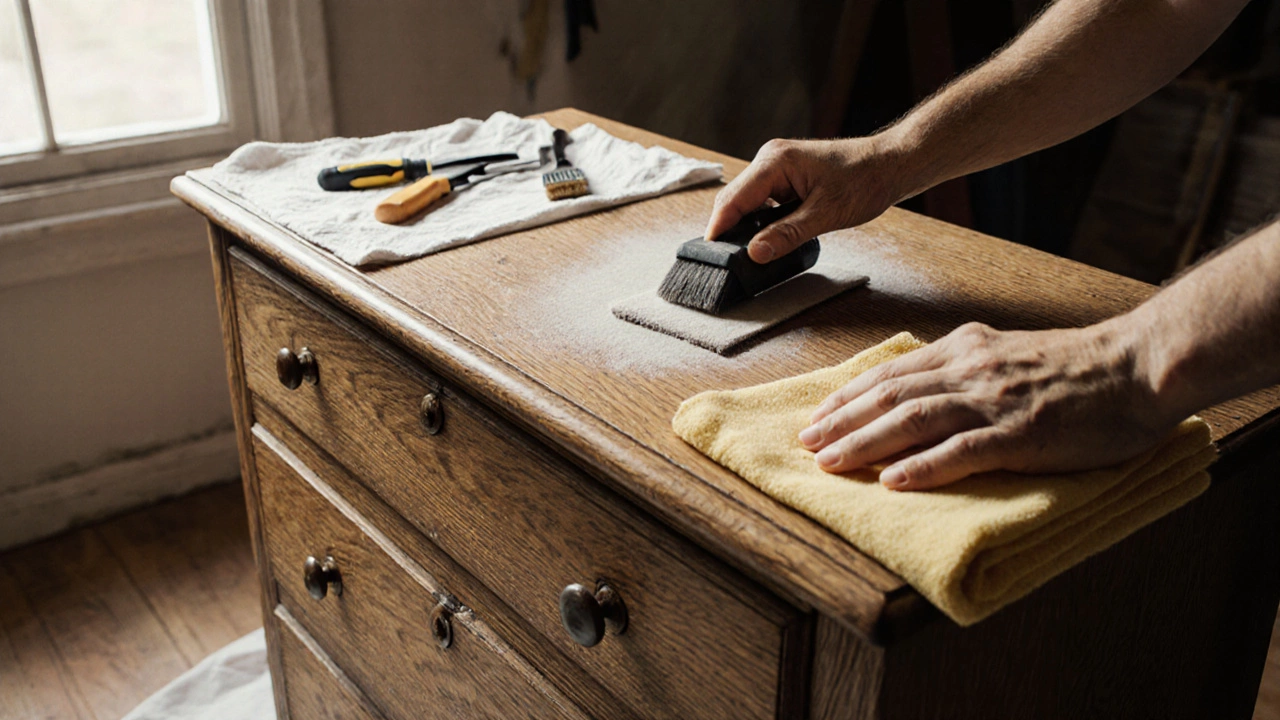When you think of vinyl wrap on furniture, a thin, adhesive film applied to surfaces to change color, texture, or finish without painting or sanding. Also known as peel and stick furniture wrap, it’s become a go-to fix for people who love the look of new furniture but hate the cost and waste of buying it. This isn’t just a quick trick—it’s a real way to extend the life of your couches, tables, dressers, and even shelves. You’re not hiding damage—you’re giving it a second chance with a material that’s tough, waterproof, and easy to clean.
It works best on smooth, flat surfaces like MDF, laminate, or sealed wood. You can’t wrap a rough, unfinished pine chest and expect it to stick well. But if you’ve got a dated particleboard bookcase, a scratched TV stand, or a plastic-coated cabinet that’s seen better days, vinyl wrap can turn it into something that looks custom-made. People in the UK are using it more than ever, especially with rising furniture prices and growing awareness of landfill waste. One study from the UK Furniture Recycling Council found that over 30% of households now consider refinishing before replacing—vinyl wrap is the top method they choose.
It’s not magic, though. You need the right tools: a squeegee, a heat gun for tricky corners, and patience. The film comes in hundreds of finishes—wood grain, marble, matte black, even metallics. You can mimic oak without the price, or go bold with a deep blue that turns a boring dresser into a statement piece. And if you mess up? You can peel it off and start over. Unlike paint, it won’t drip, stain, or leave fumes. It’s safe for homes with kids or pets, and it doesn’t require ventilation.
Related to this is the idea of furniture refinishing, the process of renewing or updating the appearance of existing furniture without replacing it. Vinyl wrap is just one tool in that toolbox. Others include sanding and staining, reupholstering, or adding new hardware. But vinyl wrap wins for speed and ease. You can wrap a coffee table in under an hour. No sanding. No drying time. No waiting for paint to cure. That’s why it’s so popular among renters, students, and anyone who doesn’t want to commit to a permanent change.
And it’s not just about looks. Wrapping your furniture helps protect it from scratches, spills, and sun fading. A vinyl-coated side table won’t mark as easily as bare wood. A wrapped bookshelf won’t show water rings from a mug. It’s a shield that doubles as a style upgrade. And because it’s removable, you can change your mind later—perfect if you’re redecorating seasonally or moving soon.
What you’ll find in the posts below aren’t just theory. They’re real fixes, real results, and real advice from people who’ve done it themselves. You’ll see how to prep surfaces, avoid bubbles, choose the right film, and even fix mistakes. You’ll learn what works on kitchen cabinets, what doesn’t stick to textured surfaces, and why some wraps last five years while others peel after six months. No fluff. No hype. Just what actually works on UK furniture in real homes.

Learn how to successfully apply vinyl wrap over wood furniture for a modern, affordable refresh. Discover prep steps, material choices, and long-term care tips to avoid peeling and bubbles.
More